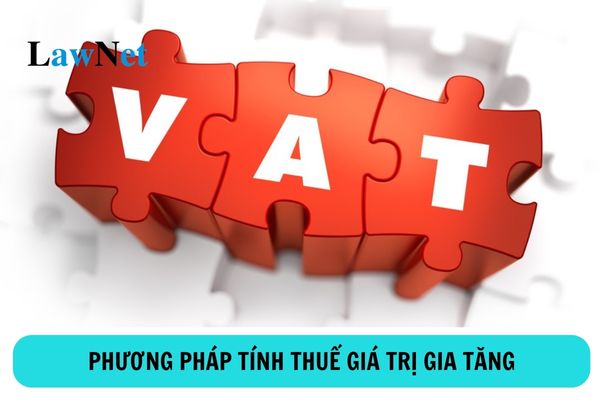How many methods for calculating VAT in Vietnam are there?
How many methods for calculating VAT in Vietnam are there?
According to Article 9 of the Law on VAT 2008, there are 02 methods for calculating VAT, including:
- Value-added tax credit method
- Method of calculation of tax based directly on added value.

How many methods for calculating VAT in Vietnam are there? (Image from the Internet)
What business establishments apply the VAT deduction method in Vietnam?
Under Clause 2, Article 10 of the Law on VAT 2008 amended by Clause 4, Article 1 of the Law on Amending Law on VAT 2013, the VAT deduction method applies to business establishments that fully comply with the policies on accounting, invoices, and documents prescribed by law on accounting, invoices, and documents, including:
- Business establishments with annual revenue from the sale of goods and services of one billion dong or more, except for households and individuals conducting business;
- Business establishments that voluntarily register to apply the VAT deduction method, except for households and individuals conducting business.
Which entities apply the method of calculation of tax based directly on added value in Vietnam?
According to Clause 2, Article 11 of the Law on VAT 2008, amended by Clause 5, Article 1 of the Law on Amending Law on VAT 2013, the entities applying the method of calculation of tax based directly on added value include:
- Enterprises and cooperatives with annual revenue below the revenue threshold of one billion dong, except those voluntarily registering to apply the credit method stipulated in Clause 2, Article 10 of the Law on VAT 2008;
- Household and individual businesses;
- Foreign organizations and individuals engaged in business without a permanent establishment in Vietnam but generating revenue in Vietnam that have not fully adhered to accounting, invoice, and document disciplines, except those foreign organizations and individuals supplying goods and services for activities related to oil and gas exploration, development, and extraction, where tax is paid under the credit method by the Vietnamese party on their behalf;
- Other economic organizations, except those registered to pay tax under the credit method stipulated in Clause 2, Article 10 of the Law on VAT 2008.
What are the regulations on input VAT deduction in Vietnam?
According to Article 12 of the Law on VAT 2008 amended by Clause 6, Article 1 of the Law on Amending Law on VAT 2013, the input VAT deduction is regulated as follows:
- Business establishments that employ the deduction method shall deduct the input VAT as follows:
+ Input VAT on goods and services used for the production and sale of goods and services subject to VAT is completely deductible, including input VAT that is not compensated of damaged goods and services subject to VAT;
+ For goods and services used for the production and sale of both taxable and non taxable goods and services, only input VAT on the goods and services used for the production and sale of taxable goods and services is deductible. Deductible input VAT must be separated from non-deductible VAT; if they are not separated, the deductible input VAT shall be calculated by the percentage of revenue from goods and services subject to VAT to the total revenue from sold goods and services;
+ Input VAT on goods and services sold to organizations and individuals that use humanitarian aid or non-refundable aid is completely deductible;
+ Input VAT on goods and services used for petroleum exploration and extraction is completely deductible;
+ Input VAT that arises in a month shall be declared and deducted when calculating the tax payable in that month. When business finds that the input VAT is declared or deducted incorrectly, it may be rectified before the tax authority issues a decision on tax inspection at the premises.
- Required papers for input VAT deduction:
+ Sale invoices or receipts of tax payment at the importation stage;
+ There are receipts of non-cash payments for purchased goods and services, except for the purchases below 20 million VND;
+ Required papers for exported goods and services apart from the papers in Point a and Point b of this Clause: a contract sign with a foreign partner to sell, process goods or provide services; sale invoices; receipts of non-cash payments; customs declarations of exported goods.
The payment for exported goods and services by offsetting the exported goods and services against the imported goods and services and repayment of debts on behalf of the State is considered non-cash payments.

